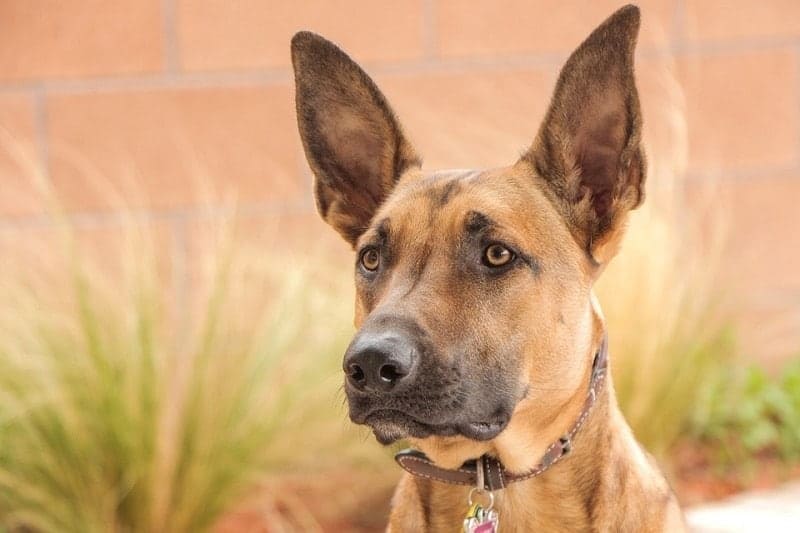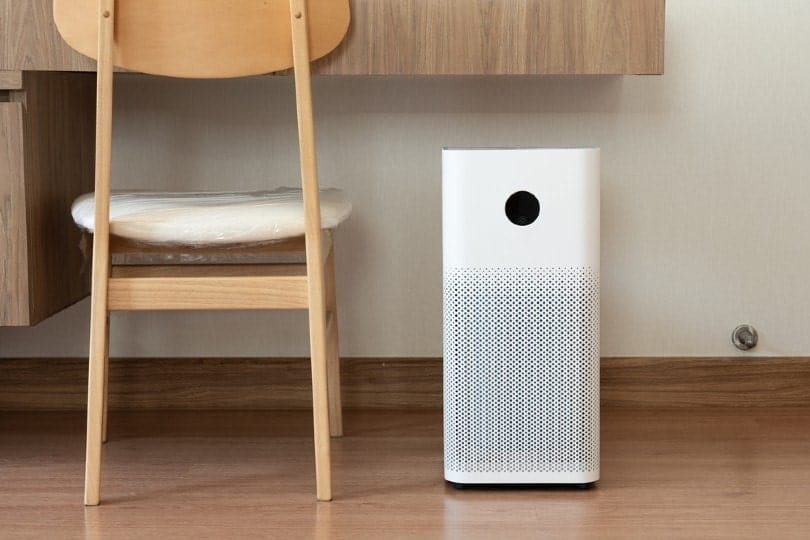The Belgian Malinois is a highly intelligent working dog that loves its humans. These dogs are eager to please, obedient, and learn commands with ease, which makes them highly sought-after police dogs. Any Belgian Malinois owner knows the characteristics and traits of these beautiful, smart dogs, but if you’re an allergy sufferer and are looking for a hypoallergenic dog, does the Belgian Malinois qualify as such?
While there is no such thing as true hypoallergenic dogs, some breeds do not cause harsh allergy symptoms because they shed minimally, and the Belgian Malinois is not among such dogs. In short, the Belgian Malinois is not considered hypoallergenic.
What Triggers Allergy Symptoms While Around Dogs?
While all dogs shed their coats to some degree, some do not shed that much, which makes them the best choice for allergy sufferers. When a dog sheds its coat, dead skin cells, also known as dander, are released. Dander sticks to just about anything in its path, including furniture, clothes, fabric, and bedding, and it’s a trigger for most people with allergies.
What Can I Do to Reduce Allergy Symptoms?
Suppose you’re dead set on getting a Belgian Malinois, or perhaps you already have one and didn’t realize you’re allergic. In that case, you’ll more than likely develop allergy symptoms that include sneezing, coughing, itchy, nasal congestion, watery eyes, and even chest tightness.
Some allergy sufferers even get rashes and hives if dander contacts the skin. However, you can take specific measures to avoid severe allergy symptoms. They are as follows:

1. Vacuum Regularly
Vacuuming once a week will help keep dander down and out of the air. Be sure to use a vacuum with HEPA filters so that it collects the dander and other allergens that might be lurking inside your home.
2. Brush Regularly
The Belgian Malinois has a short, double coat that is flat and straight, so brushing the coat with a slicker brush a couple of times a week works wonders. You may need to brush more often during the heavy-shedding times of the year, which are the spring and fall.
3. Bathe Your Dog
A weekly bath helps keep dander down. Their coats are thick and weather-resistant, and it may be beneficial to brush them and even blow their hair with a dryer to get any loose dirt and hair off before bathing.
4. Wash Your Dog’s Bedding
Washing their bedding and any blankets they use once a week can significantly help reduce dander. It also keeps their bedding smelling fresh, as well as your home.
5. Limit Access to Some Rooms
We know that dog parents love for their dogs to sleep with them, but if you’re an allergy sufferer, that may not be the best idea. It’s best to limit access in areas of your home you frequent the most to keep your allergy symptoms down. Remember that dander clings to fabrics and bedding, and if your dog sleeps with you, it will probably trigger allergies.
6. Use Air Purifiers
Using an air purifier with HEPA filters eliminates allergy triggers, such as dander, pet hair, mold, dust, and pollen from the air inside your home.

7. Immunology
While there’s no cure for allergies, allergy shots, or immunotherapy, can help your immune system acclimate to certain allergy triggers. Allergy shots work by exposing your system to certain allergens to build up some form of immunity over time. This can greatly reduce your allergy symptoms.
What Dog Breeds Are Considered Hypoallergenic?
Now that we’ve learned that the Belgian Malinois is not hypoallergenic, what other dog breeds could you consider that are hypoallergenic? Remember that there are no true hypoallergenic dogs, but there are some that don’t shed that much, which classifies them as hypoallergenic.
Some dogs that are considered hypoallergenic are an Afghan Hound, Samoyed, Irish Water Spaniel, Schnauzers, Poodles, the Shih Tzu, and the Maltese. There are plenty of other breeds that are considered hypoallergenic, but we highly suggest researching the breed you’re considering beforehand to ensure your allergy symptoms can handle the breed. This way, you can avoid having to rehome the dog, which can be heartbreaking.
Wrapping Up
Unfortunately, the Belgian Malinois is not considered hypoallergenic, but if you want a dog in your life anyway, you can either search for a dog considered hypoallergenic or put the methods in place that we mentioned above to reduce your allergy symptoms. If you’re an allergy sufferer, cheer up because there is the hope of you owning a dog, but you’ll need to do your due diligence in finding the right breed for you.
Featured Image Credit: Shutterstock














